Equatorial Guinea, a small country nestled on the west coast of Central Africa, is home to a diverse array of avifauna species.
Spanning an area of only 28,000 square kilometers, Equatorial Guinea is comprised of two main islands, Bioko and Annobon, as well as a small mainland region consisting of Rio Muni.
Known for its rich biodiversity and unique ecosystems, Equatorial Guinea is one of the few places on earth where one can find a hybrid of Afro-tropical, Guineo-Congolian and Paleotropical bird species.
From the spectacularly plumed Turacos to the singing Warblers, this tiny African country has a lot to offer for bird enthusiasts and wildlife lovers alike.
This article will cover the most common birds found in Equatorial Guinea, highlighting their unique characteristics, habitats, and behaviors.
1. Turaco
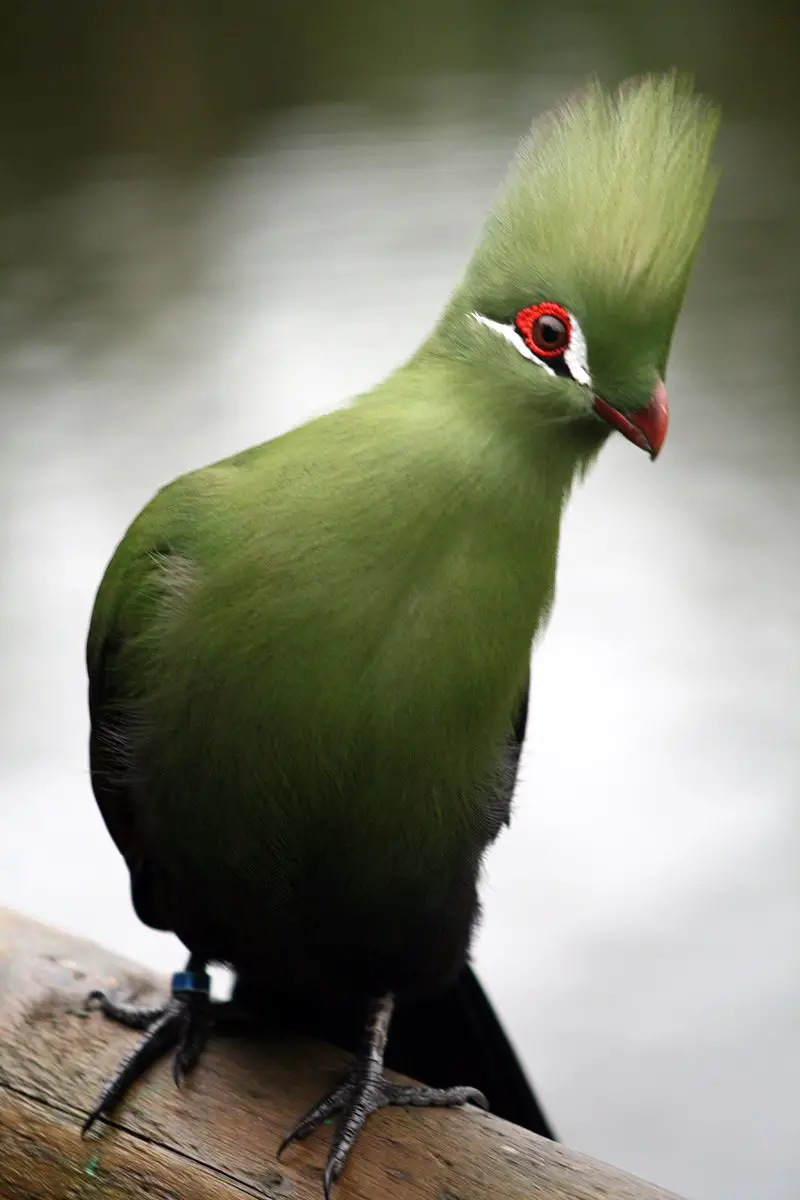
Turacos are a unique bird family that inhabit tropical and subtropical regions of Africa. They are also known as “banana-eaters” or “loeries” in southern Africa, due to their diet which consists mostly of fruit such as plantains.
These birds have an interesting semi-zygodactylous foot structure – the fourth toe can be switched back and forth while the second and third toes remain conjoined.
Turacos come in different sizes depending on species but they all generally boast bright colors like green, blue, purple or red feathers with vibrant yellow eyes.
In addition to being beautiful creatures, these birds make loud calls during mating season which makes them even more special.Scientific classification:
| Kingdom | Animalia |
| Phylum | Chordata |
| Class | Aves |
| Clade | Otidimorphae |
| Order | Musophagiformes Seebohm, 1890 |
| Family | Musophagidae Lesson, 1828 |
Also Featured In: Common Nigerian Birds, African Birds
2. Red-Eyed Dove
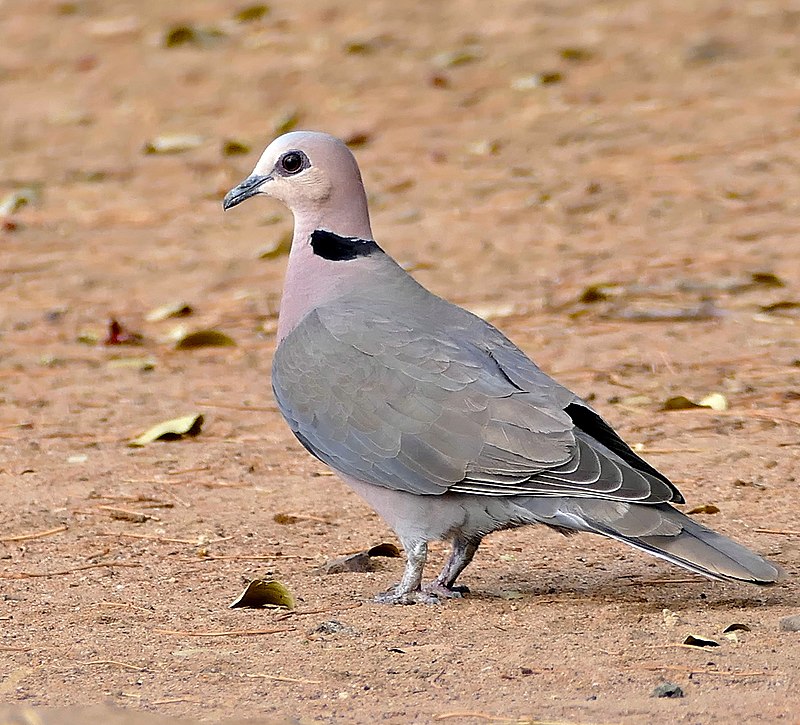
The red-eyed dove (Streptopelia semitorquata) is an attractive bird native to Sub-Saharan Africa. It was first described by German naturalist Eduard Rüppell in 1835, and since then has been listed as Least Concern on the IUCN Red List.
These birds have a distinct appearance with greyish brown upperparts, paler underparts and a distinctive half collar of dark feathers around their neck.
They also have bright red eyes that contrast sharply against their otherwise dull plumage.
The diet of the red-eyed dove consists mostly of seeds and grains found on the ground or from shrubs, but they will occasionally eat insects too.
All in all this species is quite common across its range making it one of nature’s most eye catching creatures.Scientific classification:
| Kingdom | Animalia |
| Phylum | Chordata |
| Class | Aves |
| Order | Columbiformes |
| Family | Columbidae |
| Genus | Streptopelia |
| Species | S. semitorquata |
Also Featured In: Common birds in Mozambique ,
3. Honeyguide
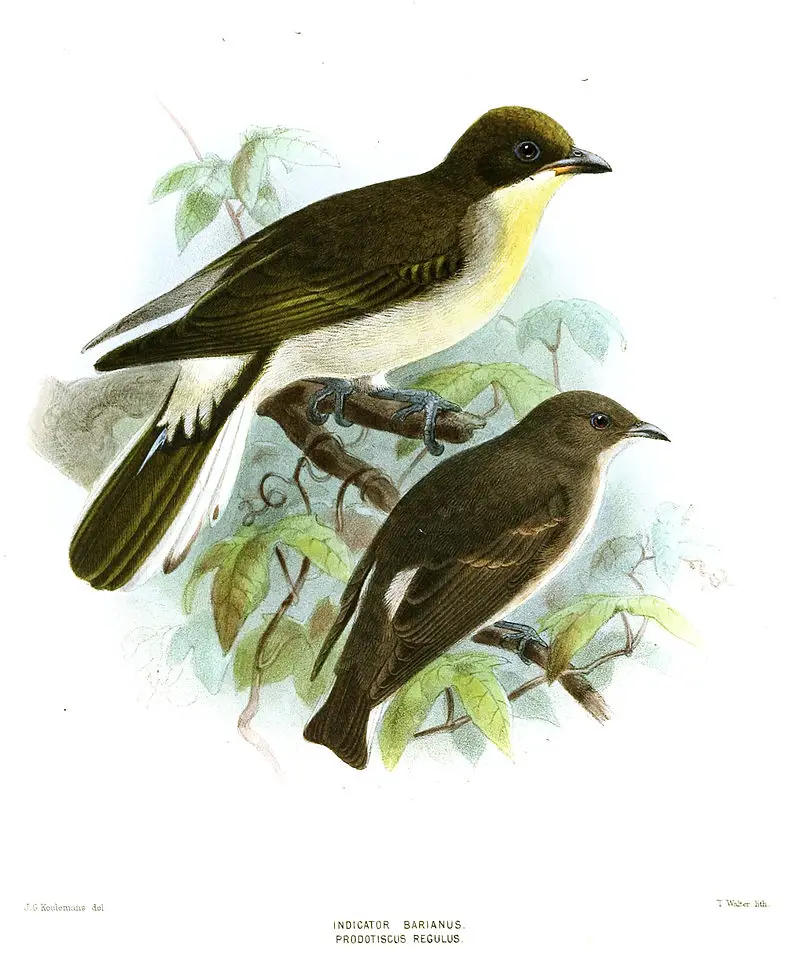
Honeyguides are small, near passerine birds belonging to the family Indicatoridae. Native to tropical regions of Asia and Africa, they’re best known for their unique relationship with humans.
They have a mutualistic association with people by leading them towards bee colonies in exchange for wax or honey from the hive after it has been opened up.
Honeyguide birds use special calls that sound like ‘tink-tink’ or ‘hweet hwuit’, which is thought to be their way of telling potential partners about food sources available nearby.
This remarkable ability makes them an invaluable resource for local communities and indigenous groups who rely on wild bees as a source of income and nutrition.Scientific classification:
| Kingdom | Animalia |
| Phylum | Chordata |
| Class | Aves |
| Order | Piciformes |
| Infraorder | Picides |
| Family | Indicatoridae Swainson, 1837 |
Also Featured In: Most common bird in Zambia,
4. Mousebird
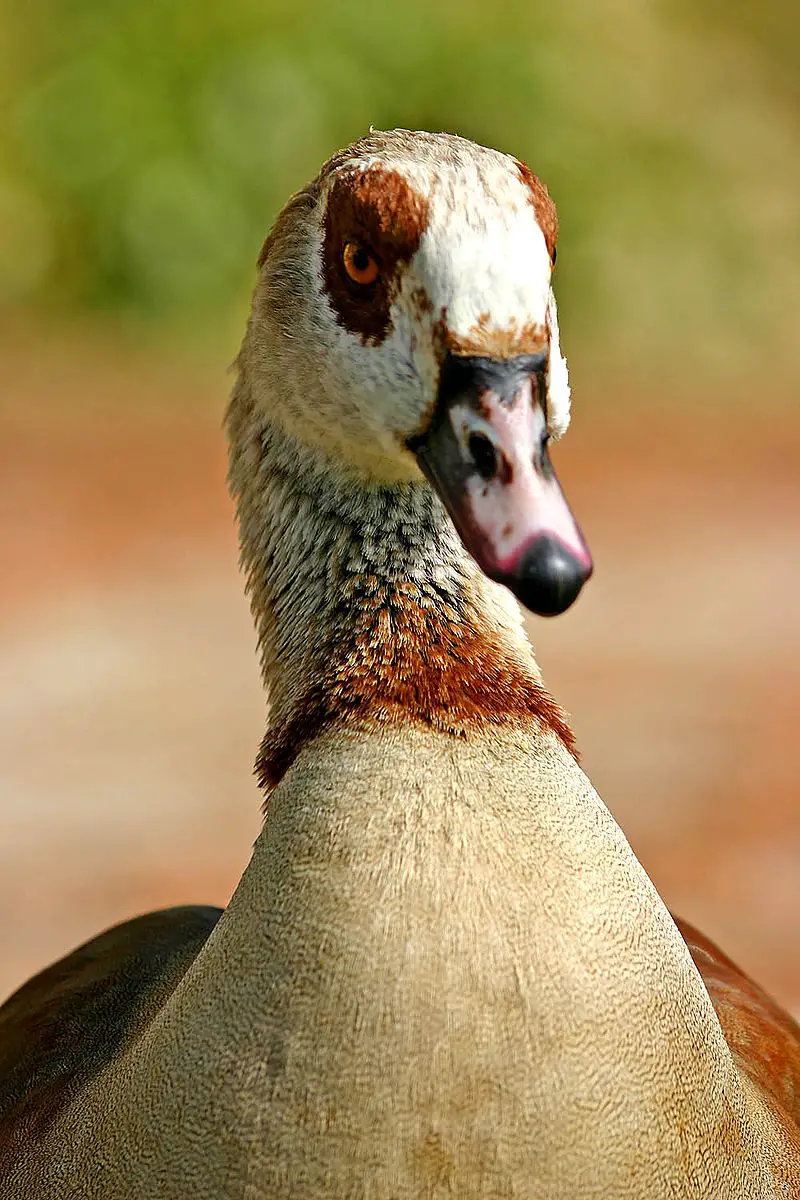
The Mousebird, also known as Coliidae, is a unique small bird found only in Africa. These birds are quite sparrow-like in shape, with a long, thin tail, sharp claws, and pointed beaks.
Unlike most birds, they have zygodactyl feet, which means their toes are arranged in opposing pairs. They are monogamous birds and build their nests using grass, rags, and other available natural resources.
They lay small eggs annually and incubate them for around two weeks before they hatch. The Mousebird is mainly vegetarian, behaviorally social, and stick together in small flocks.
They can be seen hovering in search of food during the daylight, using their long pointed beaks to probe for fruit, seeds, and insects.
Their feathers, which can vary in color according to their species, are quite distinct, with neat patterns of vertical stripes running down their bodies. Mousebirds are generally harmless, peaceful, and enjoyable to watch.
5. Wood Hoopoe
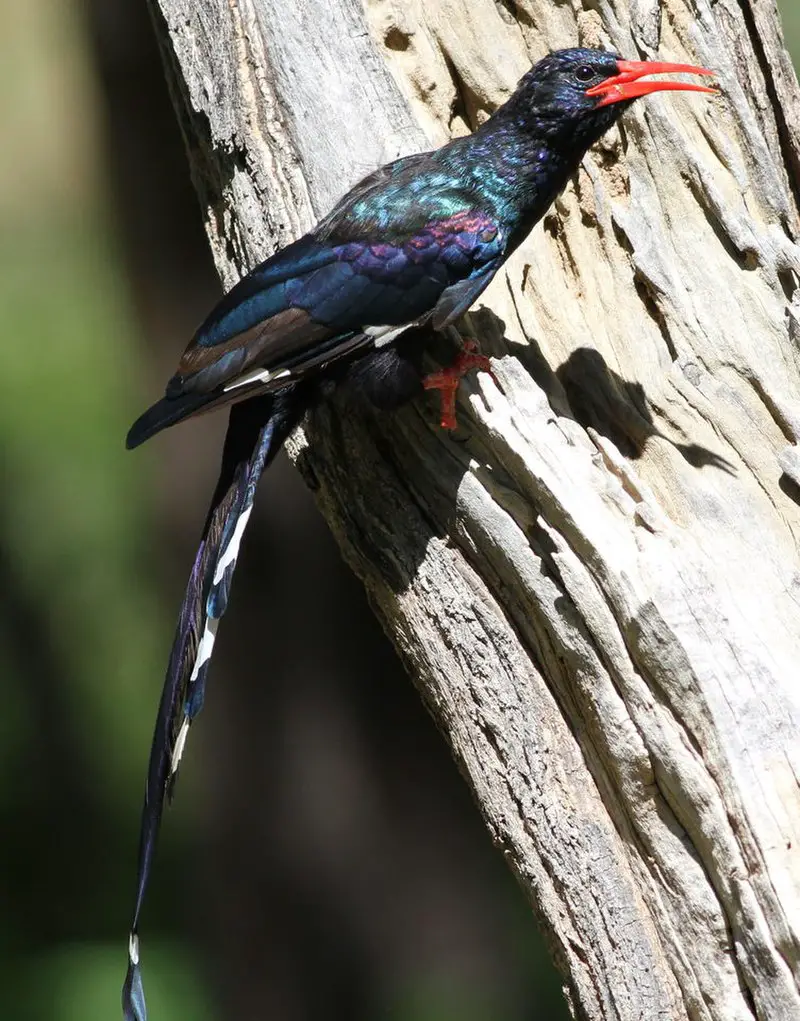
The Wood Hoopoe bird is a small African species found south of the Sahara Desert. They are not migratory and belong to the family Phoeniculidae. Fossil evidence reveals that this family once had a more extensive distribution.
The Wood Hoopoes are related to other passerine birds, and their family is currently limited to Sub-Saharan Africa.
Furthermore, they are also known as Scimitarbills and are characterized by their unique beak shape, which is curved and resembles a scimitar sword.
These birds are typically found in areas with dry forests and woodlands, and they feed on insects and spiders.
Wood Hoopoes are well-known for their distinctive calls, and their presence is often signaled by their loud single-note whistle calls.
Despite their attractive appearance and unique features, however, Wood Hoopoes are not commonly kept as pets due to their specialized dietary requirements and restricted range.Scientific classification:
| Kingdom | Animalia |
| Phylum | Chordata |
| Class | Aves |
| Order | Bucerotiformes |
| Family | Phoeniculidae Bonaparte, 1831 |
Also Featured In: Birds of Côte d’Ivoire,
6. Red-Faced Crimsonwing
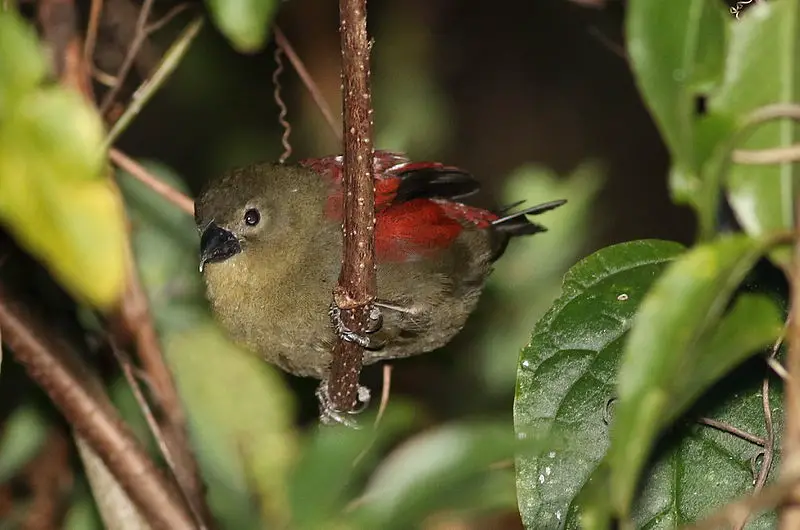
The red-faced crimsonwing bird, scientifically known as Cryptospiza reichenovii, is a widely distributed estrildid finch primarily found in Africa.
With an estimated global extent of occurrence of 390,000 km2, this bird is commonly spotted in countries such as Angola, Burundi, Cameroon, Mozambique, and Zimbabwe, among others.
According to Antonio Arnaiz-Villena’s research, its origin and phylogeny have been well-studied. This small, colorful bird boasts a striking red face and a crimson body, which makes it quite easily identifiable.
It is a beloved member of the finch family, known for its beautiful plumage and a cheerful, melodic chirping song.
Despite not being classified as an endangered species, the protection of its natural habitat is paramount for its continued survival.Scientific classification:
| Kingdom | Animalia |
| Phylum | Chordata |
| Class | Aves |
| Order | Passeriformes |
| Family | Estrildidae |
| Genus | Cryptospiza |
| Species | C. reichenovii |
7. Green Hylia
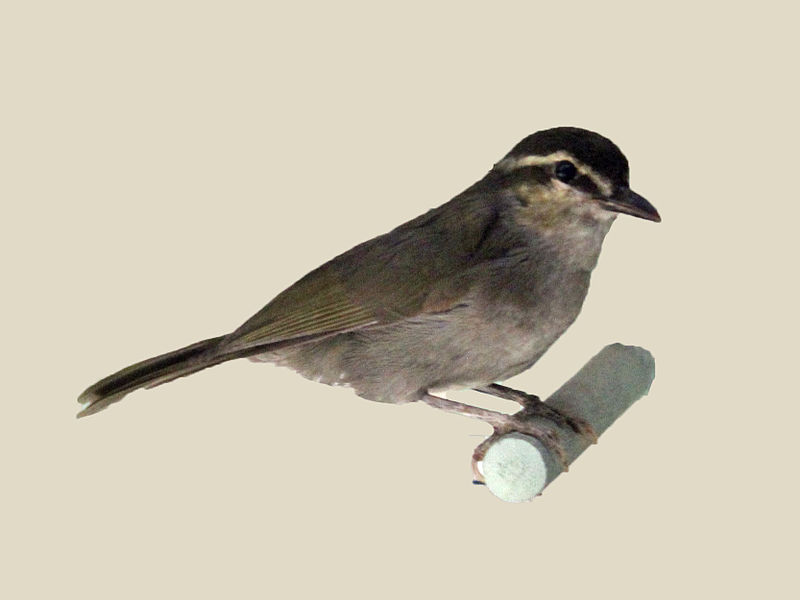
The Green hylia, a small songbird, is found in tropical regions of Africa where it lives in the understory and mid-stratum of moist forests. As a canopy insectivore, it feeds on insects found in the canopy.
In 2019, the Green hylia was placed in a new family called the Hyliidae, previously thought to belong to the Cettiidae warblers.
It is the only species in its genus, Hylia prasina. Despite its small size, the Green hylia has a distinct and beautiful song.Scientific classification:
| Kingdom | Animalia |
| Phylum | Chordata |
| Class | Aves |
| Order | Passeriformes |
| Family | Hyliidae |
| Genus | Hylia Cassin, 1859 |
| Species | H. prasina |
8. Little Greenbul
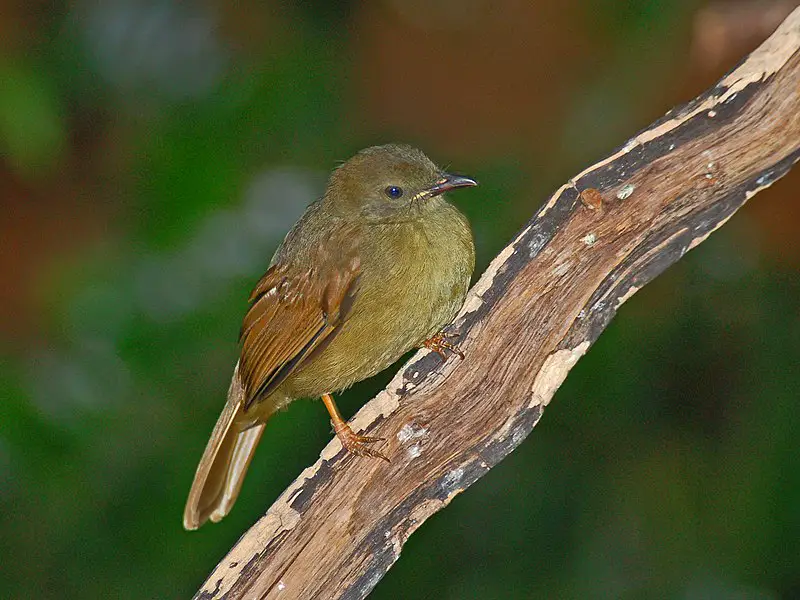
The Little Greenbul is a passerine bird species found in sub-Saharan Africa. It belongs to the bulbul family, and it was first classified under the genus Andropadus, although it was later re-classified to Eurillas.
Some authorities also classify it under the genus Pycnonotus. This bird species is prevalent in many regions of sub-Saharan Africa, and it is identified by its green plumage. The Little Greenbul has five recognized subspecies.Scientific classification:
| Kingdom | Animalia |
| Phylum | Chordata |
| Class | Aves |
| Order | Passeriformes |
| Family | Pycnonotidae |
| Genus | Eurillas |
| Species | E. virens |
9. Red-Bellied Paradise Flycatcher
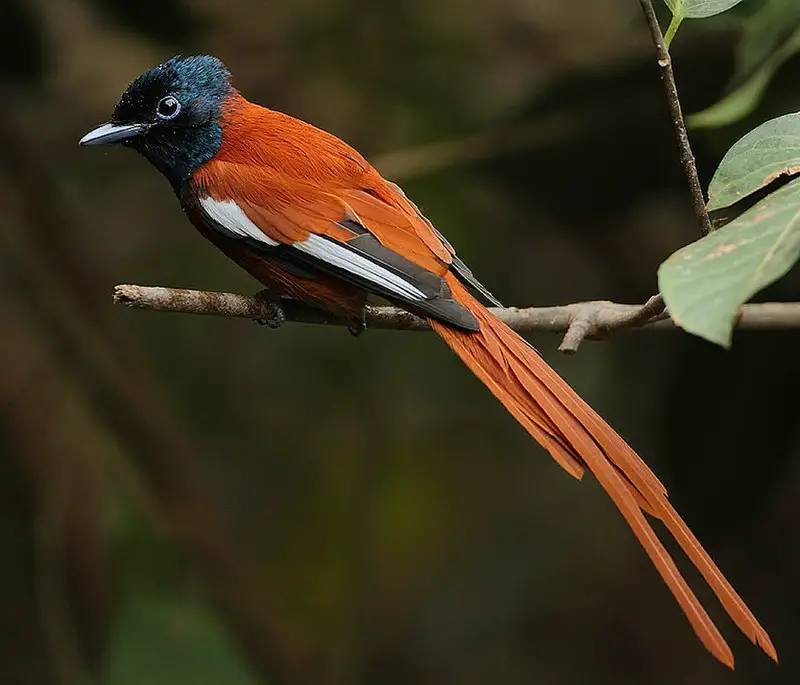
The Red-bellied paradise flycatcher, also known as the Black-headed paradise flycatcher, is a beautiful medium-sized passerine bird found in the intra-tropical forests of Africa.
The male bird measures around 17 cm in length and has a striking color combination. Its head is black, its body is mainly chestnut, and its tail has streamers that are almost twice as long as its body.
This bird belongs to the family of monarch flycatchers and is known for its excellent ability to hunt insects on the wing. The female bird is less colorful than the male, with a gray-brown head and a light brown back.
These birds are known for their melodious songs, which can often be heard in their habitat.
Their unique beauty and singing makes them one of the most popular and sought-after bird species for birdwatchers and bird enthusiasts all over the world.Scientific classification:
| Kingdom | Animalia |
| Phylum | Chordata |
| Class | Aves |
| Order | Passeriformes |
| Family | Monarchidae |
| Genus | Terpsiphone |
| Species | T. rufiventer |